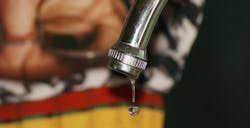Tap Water Database Educates Consumers
The Environmental Working Group released a Tap Water Database to help consumers learn more about the kinds of contaminants that might be in their local drinking water.
“It’s important for consumers to know what’s in their drinking water,” said Water Quality Assn. (WQA) Government Affairs Director David Loveday. “This new tool from EWG will help homeowners across the country determine whether they should consider having their water tested and whether they need some form of water treatment.”
The database contains the results of tests from the U.S. Environmental Protection Agency (EPA) from nearly 50,000 utilities in all 50 states and the District of Columbia from 2010 to 2015. Consumers can enter their zip code to learn more about the quality of their local drinking water.
EPA requires nearly all community water systems to issue a Consumer Confidence Report (CCR) every year by July 1, but according to a recent national study conducted for WQA, 62% of households across the U.S. either didn’t read or don’t know if they received their community’s CCR. That’s up from 56% in a 2015 survey.
Residents should have their drinking water tested through a certified water-testing laboratory. Homeowners can check with the Water Quality Association to find a water quality professional or connect with a certified testing lab through EPA.
